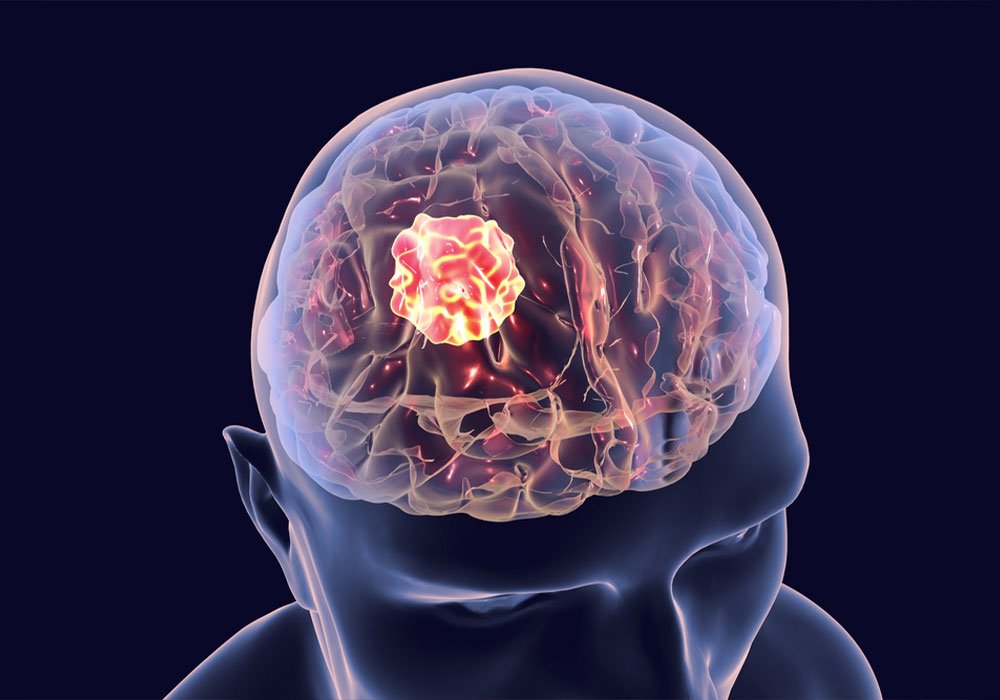
A brain tumour is an abnormal growth or mass of cells in or around your brain and it can be
malignant (cancerous) or benign (noncancerous). In some cases some tumours grow quickly, while others are slow growing.
Types of brain tumours
Researchers have identified more than 150 different brain tumors.
Tumours that develop in your brain are called primary tumours. Tumours that spread to your brain after forming in a different part of your body are called secondary tumours,
or metastatic brain tumour.
Usually brain tumours are differentiate in two categories that are benign (noncancerous) or malignant (cancerous).
Types of brain tumors that are usually primary tumours (benign) include :
1 – Gliomas: Gliomas are tumors that develop from glial cells. These cells normally:
support the structure of your central nervous system. provide nutrition to your central nervous system. clean cellular waste.
break down dead neurons.
2 – Pituitary Tumors, which are usually benign
3 – Pineal Gland Tumors, which can be benign or malignant
4 – Ependymoma, which are usually benign
5 – Craniopharyngiomas, which occur mostly in children and are benign but can have clinical symptoms like changes in vision and premature puberty.
7 – Primary Central Nervous System (CNS) lymphomas, which are malignant
8 – Primary Germ Cell Tumors of the brain, which can be benign or malignant
9 – Meningiomas, which originate in the meninges
10- Schwannomas, which originate in cells that produce the protective cover of your nerves (myelin sheath) called Schwann cells
~ Secondary brain tumors make up the majority of brain cancers. They start in one part of the body and spread, or metastasize, to the brain. The following can metastasize to the brain:
- lung cancer
- breast cancer
- kidney cancer
- skin cancer
Secondary brain tumors are always malignant. Benign tumors don’t spread from one part of your body to another.
The risk factors for a brain tumour are -
Family history – Only about 5 to 10 percentTrusted Source of all cancers are genetically inherited, or hereditary. It’s rare for a brain tumor to be genetically inherited.
Age – The risk for most types of brain tumors increases with age.
Chemical exposure – Being exposed to certain chemicals, such as those you might find in a work environment, can increase your risk for brain cancer.
Exposure to radiation – People who have been exposed to ionizing radiation have an increased risk of brain tumors.
Signs and symptoms
Some people who have a brain tumor experience no symptoms, especially if it’s very small and sometimes brain tumours vary depending on the tumor’s location, size and type. They can include:
- Headaches that may be more severe in the morning or wake you up at night.
- Seizures.
- Difficulty thinking, speaking or understanding language.
- Personality changes.
- Weakness or paralysis in one part or one side of your body.
- Balance problems or dizziness.
- Vision issues.
Hearing issues. - Facial numbness or tingling.
- Nausea or vomiting.
- Confusion and disorientation.
Management
- Healthcare providers use several tests to diagnose a brain tumor, including:
- Brain MRI or CT scan with gadolinium contrasts Biopsy
- Spinal tap (lumbar puncture) : For this procedure, your healthcare provider uses a small needle to remove cerebrospinal fluid (CSF) from around your spine. A laboratory examines this fluid to look for cancer cells.
How are brain tumors treated ?
Brain tumor treatment depends on several factors, including: The tumor’s location, size and type,The number of tumors, Your age and Your overall health.
Benign (noncancerous) brain tumors can usually be successfully removed with surgery and don’t usually grow back.
Healthcare providers often use a combination of therapies to treat a tumor. Your treatment options might include:
1 – Brain surgery (craniotomy)
2 – Radiation therapy: High doses of X-rays destroy brain tumor cells or shrink the tumour.
3 – Radiosurgery: This is a type of radiation therapy that uses very focused beams of radiation (gamma rays or proton beams) to destroy a tumor. It’s not actually surgery because it doesn’t require an incision (cut).
4 – Brachytherapy: This is a form of radiation therapy. It involves surgically placing radioactive seeds, capsules or other implants directly in or near the cancerous tumor
5 – Chemotherapy: This therapy consists of anticancer drugs that kill cancer cells in your brain and throughout your body.
6 – Immunotherapy: Immunotherapy, also called biological therapy, is a type of treatment that uses your body’s immune system to fight cancer.
7 – Targeted therapy: With this treatment, drugs target specific features in cancer cells without harming healthy cells.
8 – Shunts.
